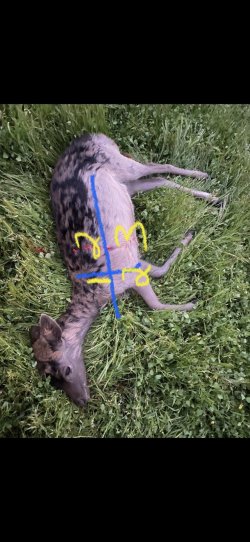This is from a friend who studies this stuff: "Ballistic gel is not a perfect analog for living tissue. Still, it can show the behavior of a bullet in a consistent medium and therefore allows us to compare projectiles and approximate performance on game."curious what is the reason that gel shows that permanent wound channel going thick to thin back to thick again
Seen it in a few cases of gel that people have put up & never used gel myself so just curious as I don't take information on gel as Gospel as been burnt from thinking it would act that way once in a critter
Also worth noting; there are two types of damage caused by a bullet. Crush damage is the damage created by direct bullet-to-tissue interaction, radial tearing is the stretch damage or tearing caused by cavitation / hydraulic pressure. The difference between the two is hard to tell in a shot gel, but you can see the stretching clear as day in high-speed footage.
The reason for the change in wound channel diameter is energy loss - Newton's first law is helpful in understanding this stuff.
It takes some time for a bullet to expand, this is why you see the "initial pencil hole" (1)
Then once expanded the rate of deceleration increases as energy is transferred from the bullet to the tissue or gel. As it decreases, less energy is available to transmit and therefore the displacement and stretching/tearing damage to the medium is less and less. (3)
With badlands, we also have the petal effect. Provided the impact velocity is high enough, the petals break from the shank and radiate out just after expansion, creating their own smaller wound channels perpendicular to the one created by the shank (2). This serves to increase the surface area of the wound and accelerate loss of blood pressure.
What's wild is the remainder of the wound channel which is created by what is a caliber-diameter shank, appears to compare favorably to a Barnes or similar performing copper solid - even ones that expand to more than 2x caliber. I can only assume this is due to the higher impact velocity, and I would like to get an apples-to-apples comparison soon. For anyone interested the North American Nonlead Partnership has done some comparisons that I have helped out with. We'll be posting more as we iron out our methodology here soon.

